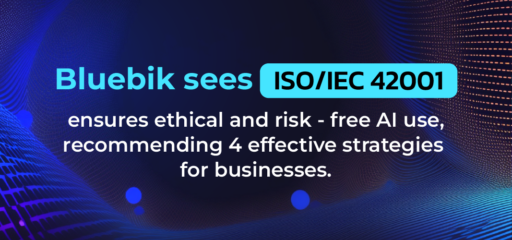We have heard for a long time that Digital Disruption will likely cause significant change to every industry. Any business that cannot cope with such change could be suffering from losses. Therefore, many organizations are expeditiously conducting digital transformations to overcome obstacles and grasp new opportunities; otherwise they could eventually go out of business.
Although all organizations know that they have to embrace changes, it is not necessarily true that each organization can adjust themselves at the same speed as they each have different limitations. One of these constraints is the IT capability gap for each organization. A frequent occurrence that an organization never expects is that the IT capability will play a critical role in the competition of this era. Many organizations do not have the IT capability planning necessary for their preparation for the change. Thus, this IT capability gap should be filled as soon as possible.
What is IT Capability and why is it important to today’s organization?
When we want to measure our organization’s abilities and levels of abilities, IT capability is considered as one of the measuring tools. Actually, whether the measurement in terms of IT capability can answer the business needs of an organization mainly depends on the perspective of cost-effectiveness. This involves various elements including strategic planning, work processes, employees, or even infrastructure systems. All these elements must go in line with the direction to which the business is moving forward.
Hence, the IT capability of an organization can be either a “tailwind” or a “headwind” that dictates the speed and flexibility of each organization’s transformation. So, if an organization neither puts efforts in understanding concerning challenges nor lays down strategies to solve IT capability issues, its transformation may face a disruption which leads to its loss in the “Fast Fish Eats Slow Fish” battleground.
Key reasons for IT issues becoming obstacles to business movements
Once the management feels that IT movements are slower than business requirements, it’s time to take a closer look at the IT issues and identify whether they are part of the following list.
- Prioritization of conflicting projects between different functional units
- IT system investments that are not aligned with business goals
- Selection and retention of IT talents to stay within the organization
- Segregation of IT and business functions in learning and understanding duties of each side
- Etc.
The issues faced by organizations may not be limited to the list mentioned above. However, these issues have been commonly confronted by more than 60% of companies around the world as the main reasons for business stumbles or delays, making them unable to develop themselves and stay afloat during the currents of disruption.
However, these problems can be resolved if CTO/CIO and IT start to adjust themselves together by revising old-school work practices within organizations and choosing IT capability development patterns that are commensurate with areas to be improved in order to address relevant issues more effectively.

First area : To correct the “Mindset” with the new equation of work concept “Digital = Business + IT”
To adjust the mindset in order to bring new capabilities to the organization : Business and IT departments shall work together and learn to gain better insights into each other’s department. They should collect more information through experiments by comparing projects to scientific experiments that involve both data collection and results measurement in order to understand the fast-changing needs of the customers.
To reduce the working gaps with digital roadmaps : CTO/CIO should provide digital roadmaps in collaboration with the business development function in order to see the whole picture of the organization in various dimensions including corporate direction, capability, and technology to be adopted. Further project details such as goals, possible impacts, and budgets required should be clearly established. Moreover, relevant strategies and digital roadmaps should be regularly reviewed together with the business function to identify any interesting technologies that can be applied to new business models or any tools that can speed up digital transformation and reduce opportunity costs; so both IT and business goals can be reached. Such roadmaps should be revisable or adjustable according to changing circumstances during different phases of implementation.
To manage businesses under the same umbrella/process : CTO/CIO must use Demand Management as a tool for prioritizing tasks together with the business side so as to come up with the same big picture. This is to manage business needs in line with IT resources within appropriate operational timeframes. Relevant parties should be allowed to draw a mutual conclusion through joint meetings and decision-making in prioritizing IT projects to be implemented. This is to ensure that the company’s overall direction is clearly established and aligned with priorities specified at the time being.
To integrate the “Agile Discovery and Delivery” process as part of innovation management for an organization : Some organizations may be developing new digital platforms or solutions and it is advisable for them to study and consider using the agile work process in identifying and testing new customer demands. Through such a process, tasks are delivered in shorter time cycles, enhancing the ability to conduct tests and retrieve feedback from the customers or market faster. Although this process may not always guarantee a success, businesses can use the feedback from the tests to adjust business strategies quickly according to one of the common mantras of entrepreneurs building their startups: “Fail fast, fail cheap and fail forward.”
Second area : To carefully select the model that suits the capability development to ensure faster achievement of goals and more efficiency compared to rivals
At present, most organizations have 3 ways of development to choose from. They can build an instant system/solution, choose to purchase such a system/solution, or join hands with partners in developing experts in particular fields. As such, the role of the CTO/CIO and IT in this modern era is to know how to use models that facilitate the most flexibility possible for an organization as a whole while taking into consideration the best value in the long term. For example, realizing that internal resources are required for the creation and maintenance of the organization’s digital platform for the long-term benefit of the business but, according to assessment results, internal team members are still not capable of handling a big and complex system; the CTO/CIO may decide to buy a system or partner with an expert in that particular system as a short-term plan and further develop internal personnel capability over the next 1-2 years.
Furthermore, joining hands with subject-specific experts is becoming a model adopted by most organizations and gaining more popularity. This model offers advantages in terms of lower management costs and more efficiency compared to the model of coming up with a new solution from scratch. This is especially true when the “Time to Market” or the timing factor comes into play. Partnership will help reduce risks and the delivery timeframe. For instance, a company running a project to change its core system would need many service providers to support the project. If people within the organization have little experience in managing a large-scale and complex project, there is a high chance that the project would fail without support from the partner specializing in project management. Another example is a company wising to develop its own mobile or web application that creates high impacts and answers users’ needs. In this case, it is necessary to tap into the skills of a UX Designer or UX Researcher as cooperating with an expert partner would help the company achieve its goals better and faster than the company looking for the right people from its own resources.
On a final note, we cannot deny that technology is like the backbone of each business success in today’s digital world. Therefore, managing work to ensure balance and unity between business and IT divisions along with the fast delivery of services would be a key to unlock the door of success in managing businesses amid the waves of digital disruption, as they are too strong for one person alone to handle.




